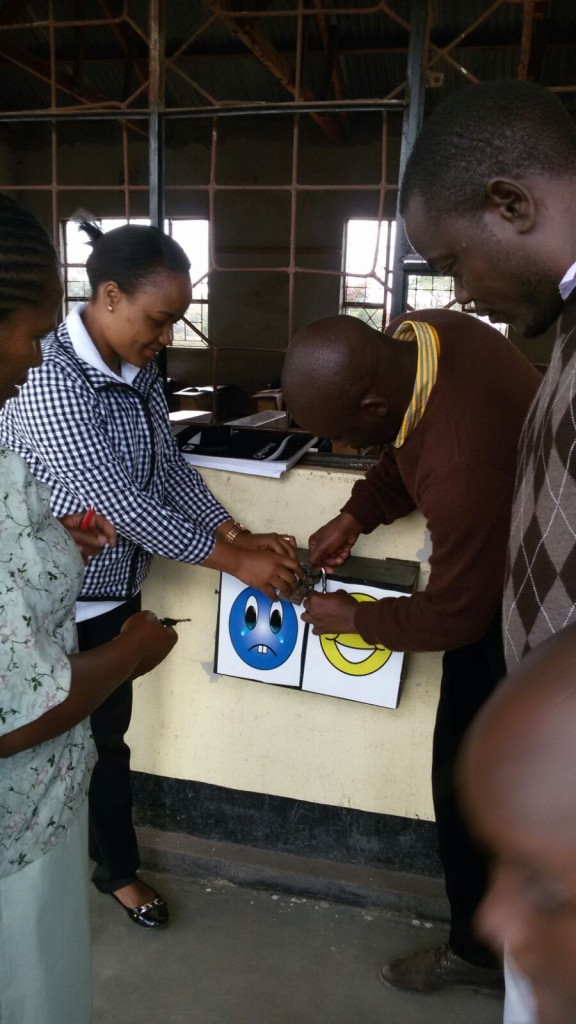September 29, 2015
The Concept of Happy and Sad Box: Most of the developmental period of children is spent at school. Children can experience child rights violations and abuse and child protection practices at school at home and in their communities. Children most equipped to share and report such practices when they are aware of their rights and responsibilities. When gate-keepers are aware of these practices, they can facilitate action, influence practices, and engender and guarantee accountability for child protection and safety. The best place to embed this system is in the school, and the best people to lead are the children themselves.
Anxiety filled the room as we stood together with the head teacher and the student representatives to open the Happy and Sad Box for the first time. The padlock was stuck, and this added to the anxiety. The students, who were out of class at the time, came closer to witness this occasion. At last, Hedwiga managed to unlock one padlock, and the head teacher unlocked the other. Indeed, inside the box were these small pieces of paper the students had written on, voicing their experiences with protection of their rights or violations to the same.
TFFT began piloting the Happy and Sad Boxes in 10 primary and 5 secondary schools; however, Kimandafu is the first school to open one of these boxes so far. On this day, the District Social Welfare Officer accompanied us. Meru District is mandated by law to protect and safeguard child rights at the district level.
The exercise involved reading through all the written pieces of paper from the box and categorizing them based on those that make children happy and sad. This took place at the head teacher’s office in the presence of: the contact teacher trained on child rights from the school, the two students representatives [a girl and a boy], the head teacher, the District Social Welfare Officer, Hedwiga, and I. We realized the anxiety was for the teachers, “What have the students written about us?”
We found what makes students Happy:
- Students in the school are happy with the way they are taught by their teachers and the guidance and support provided by teachers at school
- Students are mostly happy with the parenting that they receive at home including support with their homework and provision of educational materials.
However what made them Sad included:
- One student complaining that her peers label her as a witch and thief, and this discourages her from continuing school.
- One student reported that he is excessively punished by his father, even for things that he has not done. That the father uses water-pipes to beat him up a lot.
- Most students reported familial dysfunction issues such as separation, divorce, and alcoholism which affect their development and lives.
- Gender based violence and domestic violence at home was a common report that children face at home.
Although this narrative may change as we continue to re-open the boxes every month and in different schools, we believe that the sharing of responsibilities by the parties involved in this exercise will go a long way to improve child protection and children’s enjoyment of learning.
The District Social Welfare Officer committed to follow-up within the month with the reported families where children are abused and exposed to domestic violence and report back in the next opening of the box. The head teacher committed to communicate to the teachers the finding that children are happy with how well they teach them to improve their motivation, but also to summon the father of the student who is beaten using water-pipes to understand how such punishment affects the attendance and performance of his child at school. The student representatives committed to talk to other children who label their peers and work with the head teacher and other teachers for this to stop.
We will share more as the narrative develops and action starts being taken on child rights violation at school and in the community.

